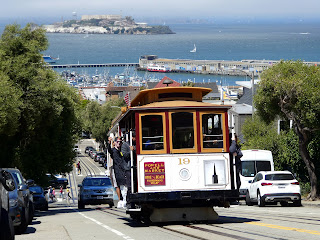San Francisco is notorious for its tight streets and limited parking. The city is implementing plans to reduce the amount of time drivers spend circling for a spot. But does this strategy actually encourage more driving? Let's explore this question and delve into the connection between traffic congestion and air pollution.
Curbing the Cruising:
San Francisco's parking reforms aim to improve efficiency by reducing the time drivers spend looking for a spot. This can involve:
- Meter pricing adjustments: Raising prices during peak hours and lowering them during off-peak times can incentivize faster parking turnover.
- Improved signage: Clearer signage can help drivers locate available spots quickly.
- Expanding resident permit programs: Designating areas for residents only reduces competition for parking on their streets.
The Double-Edged Sword:
While these strategies aim to streamline parking, there's a concern they might lead to increased overall traffic. Here's why:
- More Driving, Less Walking: Finding a parking spot faster could incentivize people to drive errands they might otherwise walk or bike for.
- Frustration Can Breed Distance: Drivers who can't find parking quickly might be more likely to drive farther in search of a spot, adding to congestion.
The Congestion-Pollution Conundrum:
Regardless of parking strategies, traffic congestion is a major concern in San Francisco. Here's how it relates to air pollution:
- Stop-and-Go Emissions: Vehicles stuck in traffic emit more pollutants due to frequent braking and acceleration.
- Increased Volume, Increased Emissions: More cars on the road simply means more pollutants being released into the air.
Finding a Sustainable Path Forward:
San Francisco's parking reforms need to be part of a multi-pronged approach to address both parking woes and air pollution. Here are some potential solutions:
- Investing in Public Transportation: Making robust public transportation options more attractive can reduce reliance on cars.
- Promoting Alternative Modes: Encouraging biking, walking, and carpooling can further decrease traffic and emissions.
- Smart Growth Policies: Developing walkable neighborhoods with mixed-use zoning can reduce the need for frequent car trips.
The Takeaway:
San Francisco's parking reforms are a step towards addressing parking struggles, but the potential for increased driving necessitates a broader strategy. By prioritizing public transportation, alternative modes of travel, and smart urban planning, the city can create a more sustainable transportation system that benefits both drivers and the environment.
Get involved:

No comments:
Post a Comment